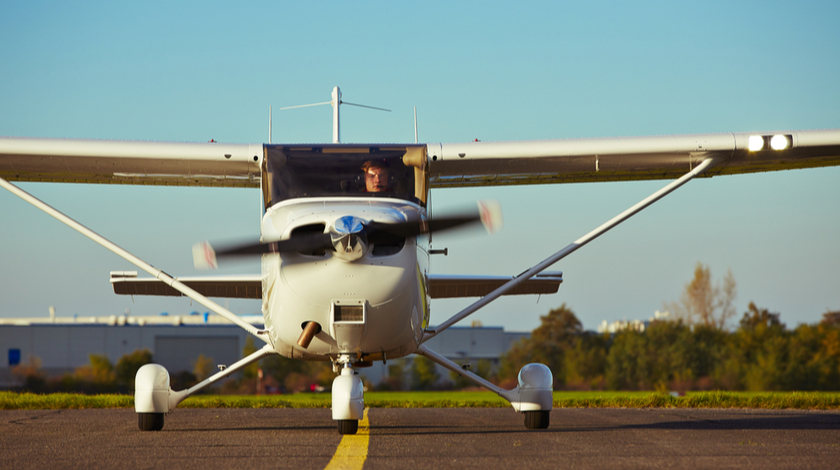Photo: Shutterstock
Reading Time: 3 minutesAlthough piloting for commercial purposes and earning profit is out of the Private Pilot Licence (PPL) scope, there are other financial prerogatives a private pilot might want to consider. According to EASA, it is fully legal to share flight costs with passengers in non-complex aircraft having no more than six people on board. This way, a pilot can alleviate their financial burden (but not eliminate) as they do not have to be the only one covering flight expenses: fuel, rental fee, airfield chares, etc.
EU Regulation says yes to cost-sharing
The cost-sharing conditions for private flights (and their evolution) are reflected in the EU regulation. It all started with rule No 965/2012, which clearly states that all the aircraft occupants can share costs, pilot included, and the number of persons sharing the direct costs is limited to six. Expenses that are not flight-related, such as those for keeping, maintaining, and operating an aircraft, cannot be shared.
In 2014, EASA introduced a new set of Air Ops regulations, which did not indicate that the costs had to be shared equally, making private flying even more opportunistic. The regulatory institution did not begin promoting private flights, but at the same time, it did not forbid advertising them. It encouraged different online flight-sharing platforms to start offering services allowing them to match pilots with passengers. Their success is undeniable as people got to registering almost instantly.
In 2017, to ensure and improve the non-commercial flights’ safety, EASA compiled a special Charter, determining the commitments imposed on flight-sharing platforms, such as raising awareness about a pilot’s code of conduct, providing guidance and tutorials on safety best-practices, etc. Flight sharing companies, such as COAVMI, Wingly, Flyt.club, Vuelea, and others signed the Charter.
What are the benefits of a pilot?
First of all, the cost-sharing opportunity gives a pilot freedom to do what they love with fewer expenditures on the one hand and high decision-making power on the other hand. A pilot is obliged to contribute to the flight costs, but the regulation does not specify the proportion.
Joris Gintilas, Chief Compliance Officer at BAA Training, says, “Students often ask whether it’s legitimate to share costs with passengers. The answer is 100% yes as both EASA and FAA gave green lights to this alternative a while ago. National aviation authorities might limit the endeavor to a certain extent, but in Lithuania, for instance, there’re no such limitations.”
Adding some figures will help to illustrate how much a pilot can save by sharing costs. Let’s assume you are a pilot carrying three other people in a four-seat airplane. You receive a rent invoice which shows the flight took 3 hours of engine time at 200€/h (the average price in Lithuania). Naturally, the rent cost would calculate as 3×200=600€. If you agreed to spread the costs equally with your passengers, your expense is just 600/4=150€.
As for making crucial decisions, it is officially in a pilot’s hands, blocking the way for any pressure coming from the passengers’ side. For instance, a pilot can cancel the flight due to unfavorable weather conditions or for other reasons. Another example can be refusing to take a passenger whose luggage weighs more than agreed during a pre-flight briefing.
Secondly, a pilot gets a chance to fly more often, eventually gaining more confidence, experience, and flight hours. There is no need to elaborate on the value of flight hours; therefore, we can simply put it as “the more – the better.” For example, in some cases, a pilot would need to have a sufficient number of flight hours “on their account” to perform flights abroad. With the hours built, they can also leap straight into a Commercial Pilot career with no requirement to start the new program from scratch or pursue an Instructor Rating.
Last but not least, more frequent flying strengthens safety. Although the safety risks involved in flying with strangers often raises concerns, in reality, no such threats were identified by a Europe-wide Working Group which analyzed the topic in 2016. In contrast, the relaxed constraints on cost-sharing flights in the EU regulation inspire pilots to fly more often. As a result, it enhances safety as more flying stands for honed skills.
To conclude, private pilots can enjoy an utterly legal possibility to reduce their flying expenses by taking advantage of cost-sharing. The rule outlined in the EASA regulation aims to stimulate the recurrence of private pilots’ flights and, thus, benefits safety. However, nobody can use it as a back door into commercial flying.

